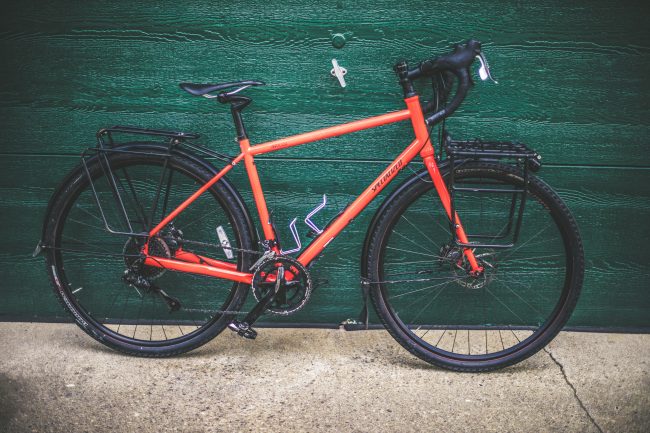A touring bicycle must be robust and reliable on any type of terrain, excluding, of course, the rugged trails reserved for mountain biking.
In this light, more and more cycling houses are equipping their own touring bikes with front suspension to make travel more comfortable.
The suspensions serve to absorb and overcome any holes, roots, bumps that can be found along the path. Not having to undergo the vibrations that these obstacles would send to the cyclist, the driving experience is improved.
However, in the specific case of bicycle touring, the suspended fork may not be indispensable because generally cycling tourists pedal on asphalt free of obstacles.
Let’s compare the advantages and disadvantages of having a front suspension on the touring bike.
Advantages
- Wider possibilities of driving the bike – the front suspension allows cyclists to pedal even off-road on white and dirt roads to get away from car traffic.
- Better driving experience – shock absorption by the suspended fork allows a lesser fatigue of the cyclist who does not have to personally absorb the vibrations resulting from bumps, holes and outlying roots. Consequently, driving experience is much better.
Disadvantages
- Higher price – a bicycle with a front suspension will certainly require a greater investment of money both for purchase and maintenance.
- More maintenance – the suspension is an additional component of the bike subject to breaks. This journey may be a problem because you do not always have the opportunity to replace or repair the piece along the path. In addition, the suspended fork requires periodic reviews and adjustments appropriate to the terrain it faces.
- More weight – with equal components, the suspension bike will logically weigh more than one that is deprived of it.
- Energy dispersion – even if locked, the suspended fork still absorbs a portion of the energy used on the pedals. This is really especially uphill, when the compression of the suspension is more visible.
Choosing whether or not to have a front suspension bike is ultimately personal. It mostly depends on the track you are going to face and the use you want to make of the bike.
It can be useful, for example, to those who want to approach the world of mountain bikes in a gradual way or to those who prefer white roads instead of bicycle paths on asphalt.
Even those who suffer from back or joint pain can benefit from mounting a suspension because it cushions the shocks and therefore the vibrations that would impact directly on the aching areas.
